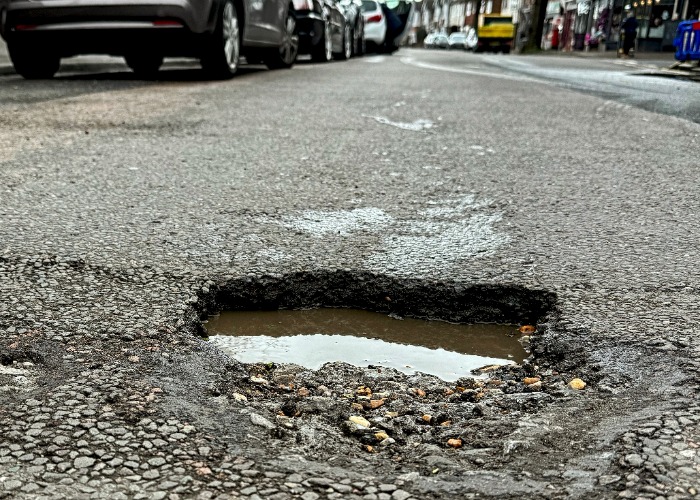Councils must publish pothole progress or risk losing funding

Local authorities will have to publish stats on roadwork or lose Government money.
Councils will have to prove they are using taxpayers’ money to fix problem potholes before they receive more Government funding, according to new rules.
Under the Labour Government’s new Plan for Change programme, local authorities will have to demonstrate they are tackling the problem by publishing how many potholes they’ve filled or risk losing funding for local road improvements.
Prime Minister Keir Starmer has unveiled a £1.6 billion investment plan to be delivered to councils in April to deal with the issue.
Local authorities that comply will receive their full share of the £500 million funding pot, which the Government claims is enough to fix the equivalent of 7 million potholes a year.
Under the plan, £4.8 billion for 2025 to 2026 has also been announced for motorways and major A-roads improvements, including road schemes on the A47 and M3 which, the Government says, will boost the economy.
From mid-April, local authorities in England will begin to receive their share of the Government’s £1.6 billion highway maintenance funding.
'Broken roads'
“The broken roads we inherited are not only risking lives but also cost working families, drivers and businesses hundreds – if not thousands of pounds – in avoidable vehicle repairs,” said Keir Starmer.
“Fixing the basic infrastructure this country relies on is central to delivering national renewal, improving living standards and securing Britain’s future through our Plan for Change.”
“The public deserves to know how their councils are improving their local roads, which is why they will have to show progress or risk losing 25% of their £500 million funding boost,” added the Transport Secretary Heidi Alexander.
Pothole progress reports
However, to qualify for the full amount of funding, from now on all local authorities in England must publish annual progress reports – the first by 30 June 2025 – and demonstrate that there is public confidence in their work.
Local councils who fail to do so could have 25% of the uplift in their funding (£125 million in total) withheld by the Government.
The reports must also detail how much the councils are spending, how many potholes have been fixed, what percentage of roads are in poor condition and how roadwork disruption is being minimised.
Local authorities will also have to demonstrate what they are spending on longer-term maintenance programmes to prevent damage to road surfaces, including plans for rainy weather in the winter, which exacerbates pothole damage.
By the end of October, councils must also show that local communities are being consulted on the required works.
Members of the public can report potholes to their local council via an online portal.
Much of the money from the scheme will be spent on current road construction programmes, such as the A428 Black Cat scheme in Cambridgeshire, new improvements to the A47 around Norwich and the M3 J9 scheme in Hampshire, as well as plans to build thousands of new homes.
'Six potholes per mile' in England and Wales
According to data from the RAC, drivers encounter an average of six potholes per mile in England and Wales, while the damage to cars costs an average of £600 to fix.
Meanwhile, the AA reports that fixing potholes is a priority for 96% of drivers.
“Getting councils to show value for money before getting full funding is a big step in the right direction, as it will encourage a more concerted attack on the plague of potholes,” said Edmund King, AA president and member of the Pothole Partnership.
“At the same time, local authorities can share best practice, so others can learn what new innovations and planned maintenance techniques have worked for them.”
Here's our handy guide on how to claim for compensation if you've received damage to your car from a pothole.
Comments
Be the first to comment
Do you want to comment on this article? You need to be signed in for this feature